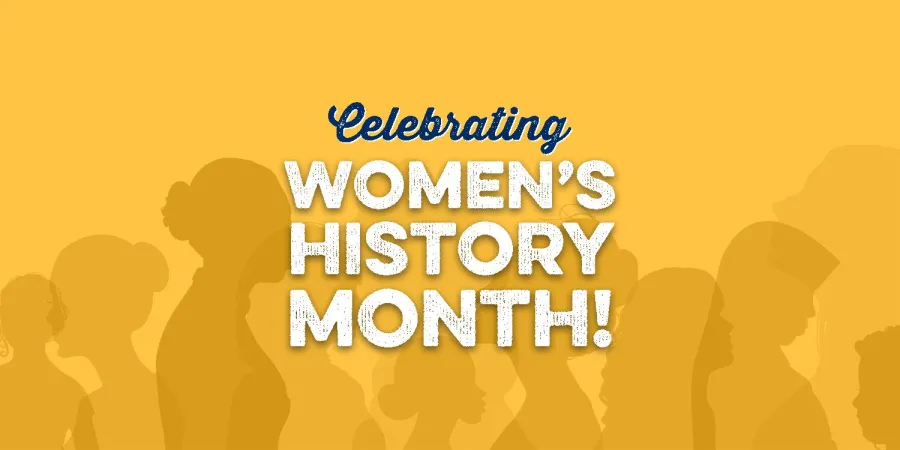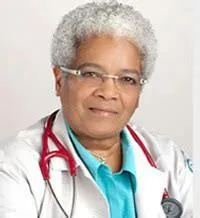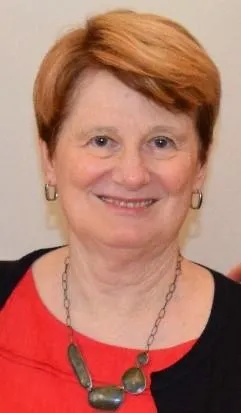Women Safety and Health Hero(ine)s

Women have long been leaders in protecting worker health. Scientists, doctors, government officials & union activists all have a part to play in making workplaces safer. The following are brief biographies of just a few of these heroines. Your local likely has women who could easily be added to this very short list.
“Every moment is an organizing opportunity, every person a potential activist, every minute a chance to change the world.” – Dolores Huerta, labor organizer and leader of the Farm Workers Union during the 1960s
Alice Hamilton, MD (1869-1970)
After graduating from medical school in 1893, Dr. Alice Hamilton became an instructor at the Women’s Medical School of Northwestern University in Chicago. As she became more involved in the community, and with the support of Hull House (a settlement house helping recent immigrants), Dr. Hamilton opened a well-baby clinic in Chicago. While she got to know her patients, Dr. Hamilton noticed how many widows there were in the community. Also, she observed a number of unusual illnesses like lead palsy, “wrist drop” and excessive, chronic pain. This was the life of working people in Chicago at the time.
Her interest in helping her patients drove Dr. Hamilton to study the diseases of working people. She quickly became recognized as an expert on worker health. Her meticulous scientific research combined with her strong social conscience led her to play an instrumental role in achieving both voluntary and regulatory protections for workers. Dr. Hamilton is the Mother of Industrial Medicine.
Linda Rae Murray, MD, MPH (1948 – still kicking butt)
“Power concedes nothing without a demand.” – Fredrick Douglas, 1849
This is Dr. Murray’s tag on her Facebook page. That should give you an idea of the kind of doctor she is. Dr. Murray grew up in Cleveland, Ohio, and spent most of her life working at Cook County Hospital in Chicago, serving the community. She eventually became chief medical officer for the Cook County Department of Public Health. She was president of the American Public Health Association (APHA) and the Medical Director of the Manitoba Federation of Labour in Winnipeg, Canada. She has served public health in many other capacities for many organizations.
As impressive as her resume is, Dr. Murray’s most impressive qualities are her compassion, commitment to social justice, tireless advocacy for workers and other underserved populations, and unflagging energy to fight for what she believes is right. It is worth your time to find Dr. Murray on YouTube and see her in action for yourself.

Frances Perkins (1882-1965)
Frances Perkins was the first woman to ever serve in a presidential cabinet. She was appointed by President Franklin Delano Roosevelt and was Secretary of Labor from 1933 to 1945.
Ms. Perkins had a long history of social justice and worker advocacy. As executive secretary of the New York City Consumers League, she used her position to push for legislation to limit working hours for women and children in factories to 54 hours per week, fire protection in factories, and other social and labor reforms.
On March 25, 1911, Ms. Perkins was having tea with a friend in Greenwich Village in New York City. She heard and saw fire engines rushing to the site of the Triangle Shirtwaist Factory. That fire resulted in the deaths of 147 workers (mostly young, immigrant women).
The Triangle tragedy spawned activists to demand a state commission to investigate factory safety and to recommend legislation to prevent tragedies like Triangle. Because of her expertise on worker health and safety, Ms. Perkins was a key resource to the commission. The commission’s work, heavily influenced by Ms. Perkins, spawned the most comprehensive worker safety laws in the nation.
Clara Lemlich (1886-1982)
Clara Lemlich was pivotal in the Uprising of the 20,000 – a strike of garment workers in New York City from 1909 to 1910. Ms. Lemlich’s family moved to the United States from Ukraine when she was 17 years old. Her family emigrated to leave the harassment of Jews that was rampant in Ukraine. Upon coming to the U.S., she found work in the garment industry and was often the main financial support for her family.
An activist by nature, Ms. Lemlich became involved in the union as a way to advocate for safer, more humane working conditions and pay. Frustrated after listening to male union leaders speaking for hours about the problems in the industry but not offering solutions, Ms. Lemlich stood up from the audience and called for a general strike in the industry. The Uprising of the 20,000 was born.
After the strike ended, Ms. Lemlich was blackballed from the industry and never worked as a garment worker again. She carried her activism in other ways for the remainder of her life. While in her 80s and living in a nursing home in California, she assisted the staff in organizing a union and successfully got the nursing home to honor the United Farmworkers Union boycott of grapes which was happening at the time.
Karen Silkwood (1946-1974)
Karen Silkwood was a member of an Oil Chemical and Atomic Workers (OCAW) local union in Oklahoma. She worked at the Kerr-McGee Cimarron Fuel Fabrication site. In the course of her job making plutonium pellets at the nuclear site, Ms. Silkwood found evidence of potentially catastrophic safety violations including falsifying product inspection records.
At the same time, the local was also in the midst of a decertification campaign. Ms. Silkwood understood the strong connection between keeping the union and having a safe workplace. The first woman to serve on the bargaining committee for her local, Ms. Silkwood enlisted the help of the international union to address the safety issues in the plant. The union took the battle to a national level and Ms. Silkwood testified about the issues at the Atomic Energy Commission (AEC) in the summer of 1974.
On Nov. 13, 1974, while on her way to meet with a reporter from the New York Times with documentation of the safety issues, Ms. Silkwood’s car ran off the road. She was killed. While it was declared an accident, there was evidence that she may have been run off the road from behind.
Ms. Silkwood’s family filed suit against Kerr-McGee for negligence and received a settlement of $1.38 million. The company did not admit fault.
Several books and movies have been about Karen Silkwood and her life and death. Ms. Silkwood was a safety and health activist and our union sister.
Eula Bingham (1929-2020)
Mentor. Trailblazer. Advocate. Scientist. Dr. Eula Bingham was the first woman to head the Occupational Safety and Health Administration (OSHA). She served under President Jimmy Carter from 1977 to 1981. Under her leadership, OSHA enacted its Right to Know regulations – giving workers the right to have information about the hazards they faced on the job. She led the agency as it developed regulations on lead, benzene and cotton dust, among other hazards. Under Dr. Bingham’s leadership, OSHA created the New Directions program which provided unions and other worker advocates with funding to train workers about the hazards they face on the job.
Prior to becoming director of OSHA, Dr. Bingham conducted “pioneering” research and published hundreds of articles on workplace exposures, cancer-causing agents, and how workers could and should be protected from these dangers.
No matter what workplace or industry you are in, chances are good that Dr. Bingham’s contributions to workplace safety have made your workplace safer.
Radium Girls (1917-1935)
From 1917 through the 1920s, women who worked in factories in New Jersey, Illinois and Connecticut were made grievously ill from their jobs painting dials on the faces of watches. The paint used was made with radium which caused the numbers to glow in the dark. In order to get clean lines, the women “pointed” the brushes on their lips. Using rags or a water rinse would have taken more time and been more expensive.
The women were told the paint and the process were harmless. Nothing could be further from the truth. U.S. Radium and the Radium Dial Company (the companies they worked for) knew this and did nothing to protect them. Radiation poisoning caused many women to develop anemia, bone fractures and “radium jaw” – a condition that causes bone damage in the jaw and can be so advanced that the jaw falls off. The women also experienced sterility and suppression of menstruation.
Chemists in the plant knew of the dangers and took precautions for themselves while the women were exposed.
When the women learned that their illnesses were caused by their workplace exposures, they tried to sue U.S. Radium for compensation for their medical and dental bills. The legal cases went on for years. Despite many obstacles, the women persisted. In the end, the women received $10,000 (equivalent to $158,000 in 2021) and $600 per year annuity (equivalent to $9,500 in 2021). All medical expenses would also be paid by the company.
In addition to their settlements, the brave fight these women pursued led to improvements in workplace conditions for future workers.
Peg Seminario
Peg Seminario has been instrumental in advancing workers’ safety and health rights. From 1990 until she retired in 2019, Ms. Seminario served as the safety and health director for the AFL-CIO. In that capacity, Ms. Seminario represented and led the labor movement in creating labor’s safety and health agenda. She participated in OSHA’s process to create dozens of regulations including chemical hazard identification, ergonomics and silica.
When the 9/11 attacks caused countless World Trade Center (WTC) responders to become ill from their exposures, Ms. Seminario fought tirelessly to enact the 9/11 Health and Compensation Act to provide health care and compensation.
Since retirement, Ms. Seminario has barely slowed down her efforts to protect workers. She has assisted the AFL-CIO in efforts to protect workers from COVID-19, and has served on the Board of 9/11 Health Watch and as a National Council for Occupationl Safety and Health (COSH) advisor.
Ms. Seminario served for many years on the Department of Labor National Advisory Committee on Occupational Safety and Health and has received awards from the American Conference of Governmental Industrial Hygienists, American Industrial Hygiene Association, American Public Health Association, many unions, and Committees on Occupational Safety and Health groups (worker advocacy organizations).
Her lifelong activism continues to protect us all.

Sue Ko Lee and the National Dollar Store Workers (1930s)
Sue Ko Lee was a worker leader at her garment factory in San Francisco in the 1930s.
In the late 1930s, Chinese garment workers in San Francisco fought sweatshop conditions. The International Ladies Garment Workers Union (ILGWU) Local 361 won a union election on behalf of workers at National Dollar Store. In reaction to the union victory, the owner of the factory sold the company to a new company (headed by the factory manager). When the new company took over, they tried to break the union.
Sue Ko Lee and her coworkers waged a powerful campaign. They led a successful strike by uniting with their white coworkers.
In addition to winning improvements in pay and benefits, the new union achieved safety and health improvements. This campaign demonstrated that worker unity across racial divides and fighting for safer workplaces build strong unions.
Ms. Lee remained a union activist and went on to lead more battles as the first Chinese American staff representative, secretary of her local union and the San Francisco Joint Board. She worked as a union organizer for 20 years.
For a list of references for this article,